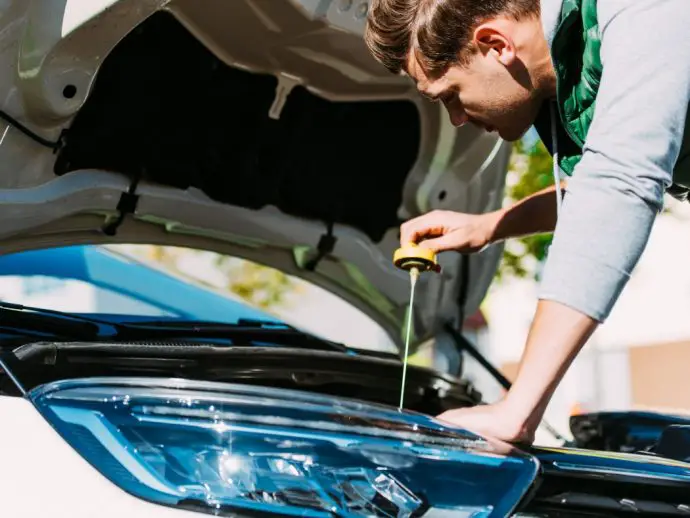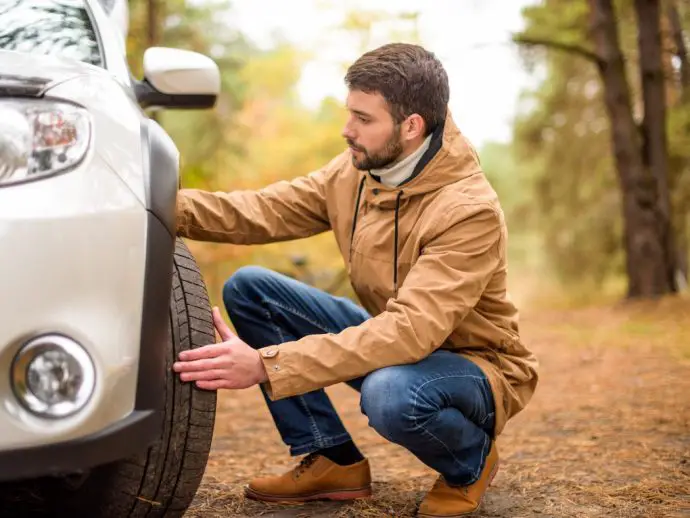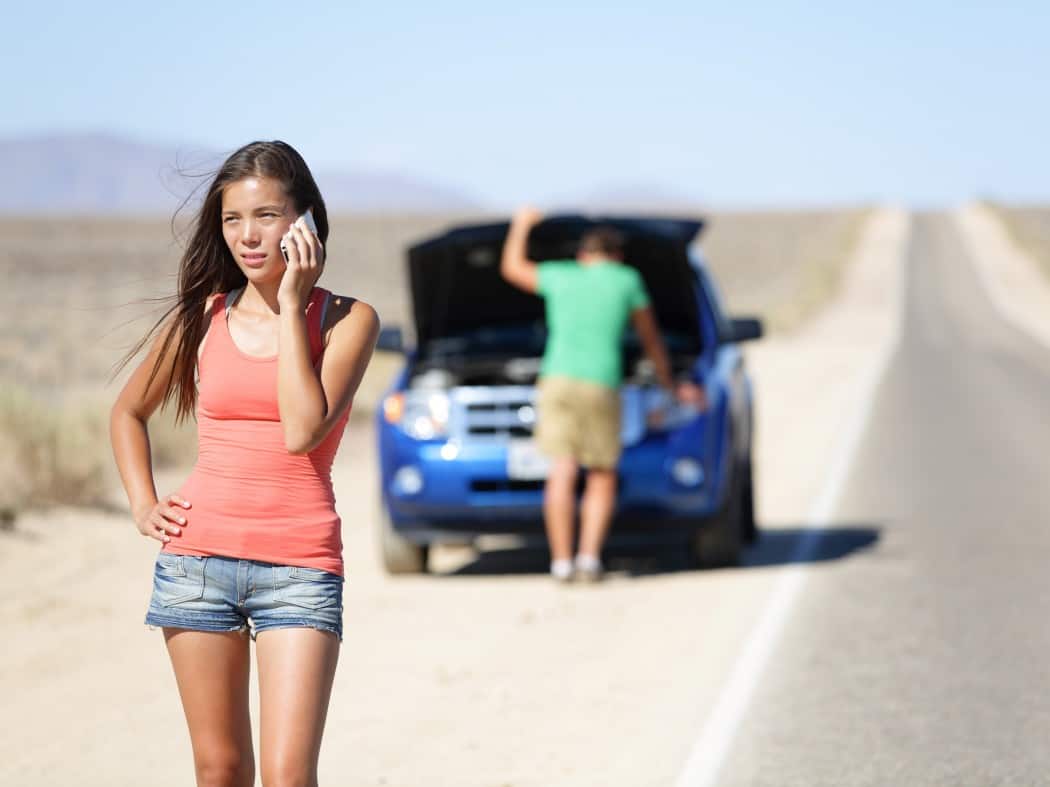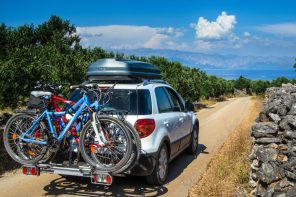What To Do When Your Car Breakdown Occurs
When a car breaks down while traveling, quick action and safety are key. Don’t panic, and try to follow the below suggestions to regain control of the situation.
Immediate Steps to Ensure Your Safety
Pull over safely, then move the vehicle away from the road if you are able. Find a flat spot if possible. Turn on your hazard lights right away. This warns other drivers something is wrong.
If it’s dark, turn on your interior lights too and erect reflective safety triangles if they are available in your vehicle. They will help make your car even more visible to other road users.
Stay in your car if it’s safe. If you must get out, exit on the passenger side away from traffic. Make sure you are even more vigilant if you’re on a busy road or motorway.
Assessing the Problem and Seeking Assistance
Try to figure out what’s wrong. Did you run out of gas? Is there smoke? A flat tire? Strange noises? This info will help when you call for help.
Call for roadside assistance if you’re a AAA member or have similar coverage. If not, call a tow truck or local mechanic. Give them your exact location. Look for landmarks or mile markers to help describe where you are.
While waiting, stay calm. Don’t accept rides from strangers. Keep your doors locked and windows up. If someone stops to help, ask them to call for assistance instead.
Keep an emergency kit in your car. It should have water, snacks, a first-aid kit, and basic tools. This can make a big difference while you wait for help to arrive.

Essential Items for Your Emergency Kit
A well-stocked emergency kit can save you in a pinch when your car breaks down. Keep these items in your trunk to handle common roadside problems and stay safe.
Mechanical Tools and Supplies
Start with a spare tire in good condition. Make sure you have a jack and lug wrench too. Pack jumper cables to restart a dead battery. Include a basic tool kit with screwdrivers, pliers, and adjustable wrenches.
Throw in some duct tape and zip ties for quick fixes. Add a jug of coolant and motor oil. Don’t forget a flashlight and extra batteries to see what you’re doing.
For flat tires, keep a can of tire sealant handy. It’s a quick fix to get you to a repair shop. A portable air compressor is great for topping up low tires.
Safety and Signaling Equipment
Visibility is key when you’re stuck on the road. Pack a reflective vest to wear while working on your car. Set up warning triangles or road flares to alert other drivers.
When going through your road trip packing list, remember to add a first aid kit for minor injuries. Add a fire extinguisher rated for vehicle fires. Stash a warm blanket in case you’re stranded in cold weather. Don’t forget your cell phone charger. Program emergency numbers into your phone. Include some cash for unexpected expenses.
A bottle of water and some snacks can keep you going if help is slow to arrive. Pack a small shovel if you live in a snowy area. These items will help you stay safe and comfortable until help comes.
How to Exit Your Vehicle in Traffic
Exiting your vehicle safely during a breakdown in traffic requires careful planning and quick action. You need to assess the situation and make yourself visible to other drivers.
Evaluating Safe Timing and Procedures
Look for a safe spot to pull over, like the shoulder or an exit ramp. If you can’t move off the road, stay in your car with seatbelts on. It’s safer inside unless there’s a fire or other danger.
When it’s time to exit, check your mirrors and blind spots. Open the door slowly and peek out first. Get out on the passenger side if possible, away from traffic. Move behind a guard rail if there is one.
Don’t try to fix your car in traffic. Call for a tow truck instead. If you must change a tire, do it well off the road.
Using Visibility Aids to Alert Others
Turn on your hazard lights right away. They warn other drivers something is wrong. At night, also turn on your interior lights.
Put out reflective warning triangles if you have them. Place them 100, 200, and 300 feet behind your car. This gives drivers enough time to anticipate the need for slowing down.
Lift your hood to signal you need help and if you have one to hand, tie a white cloth or bit of clothing to your car antenna or even the handle of your door. These are universal signs of distress.
If you have a reflective tabard or bright clothing, put it on – remain visible but never put yourself in danger by standing in the road. Wave your arms to get attention from passing drivers.
Efficiently Using Your Resources
When your car breaks down, it’s important to know how to get help quickly. Your phone is your best tool for reaching out to the right people and services.
Roadside Assistance and Towing Services
If you find yourself stranded at the roadside, try not to panic and phone for roadside assistance immediately. Many car insurance policies include this service. Check your insurance card or app for the number to call.
If you’re on a highway, look for emergency call boxes. These connect you directly to help. Some states have special numbers to dial for road help. In Maryland, you can call #77 for assistance on state roads.
Towing services can come to your rescue if you can’t fix the problem yourself. They’ll take your car to a nearby repair shop. Make sure to ask about the cost before they start towing.
Understanding Your Insurance
Your car insurance might cover more than you think, and many policies include roadside help and towing. Check with your insurance company to see what’s covered on your policy, especially if you’re going on road trip away from home. They can send a tow truck or mechanic to help you.
Don’t forget to keep your policy info in your car, to lessen the hassle when you find yourself in a breakdown situation. Save important numbers in your phone too, as having immediate access can make a huge difference when you’re in a pickle.

Next Steps to Recovery and Prevention
Getting back on track after a car breakdown takes some careful steps. You’ll need to handle repairs and learn from the experience to prevent future issues.
Navigating Repairs and Dealing with Service Providers
Start by finding a trustworthy repair shop and ask friends for suggestions or check online reviews. When you take your vehicle to the garage, make sure you get across exactly what the problem is when talking to the mechanic.
Get a written estimate before any work begins to avoid nasty surprises when you get the invoice. Feel free to ask questions if there’s something you’re not sure about.
Keep all receipts and paperwork from the repairs. These may be needed for insurance or warranty claims. If the repair costs seem high, don’t be afraid to get a second opinion. Some shops offer free inspections.
Learning from the Experience: Car Maintenance and Preparedness
Regular car care can help prevent future breakdowns. It’s a good idea to look at the car manual to find out more about the maintenance schedule.
Keep an eye on your car’s fluids, especially oil and coolant. Low levels can cause big problems so listen for odd noises and pay attention to warning lights on your dashboard. These often signal issues before they become serious. Put together an emergency kit for your car, with things like jump leads, a torch, and a handful of simple tools.





